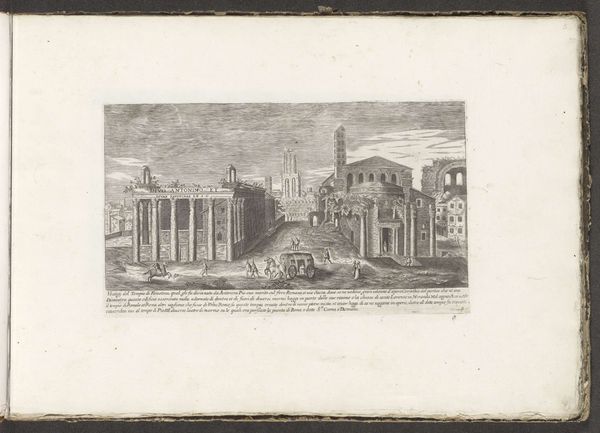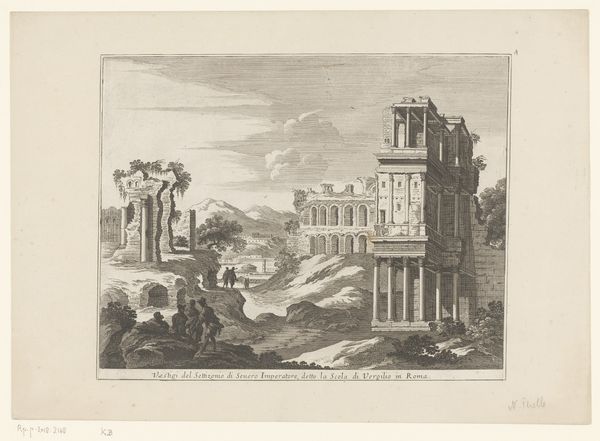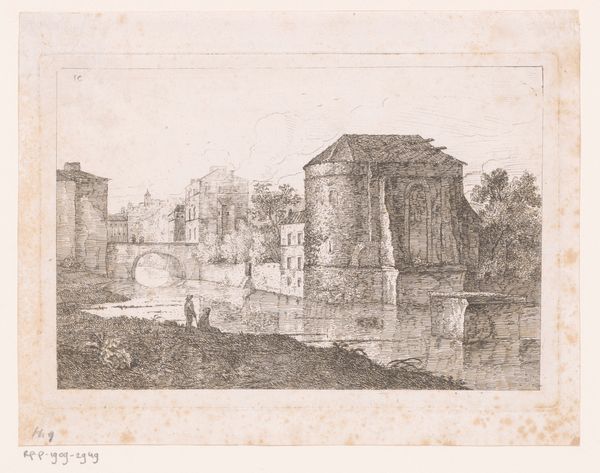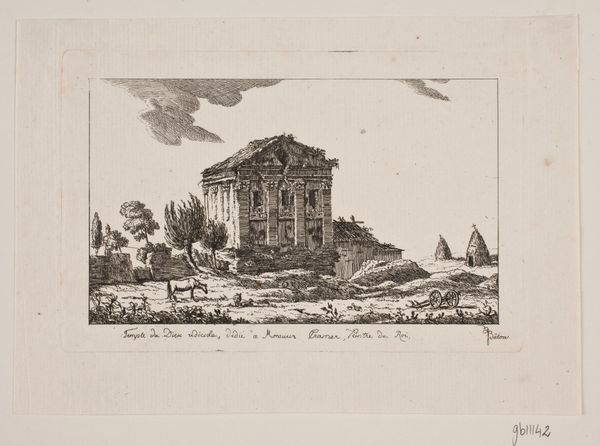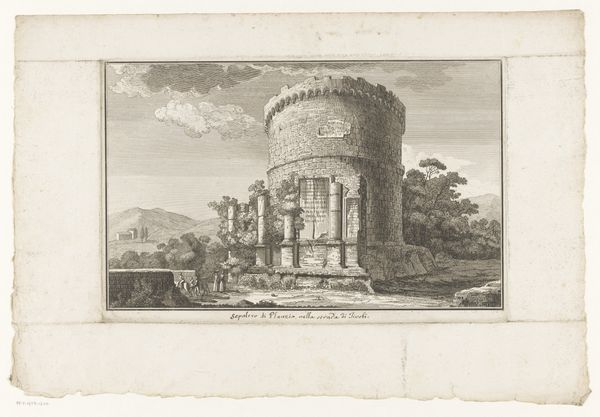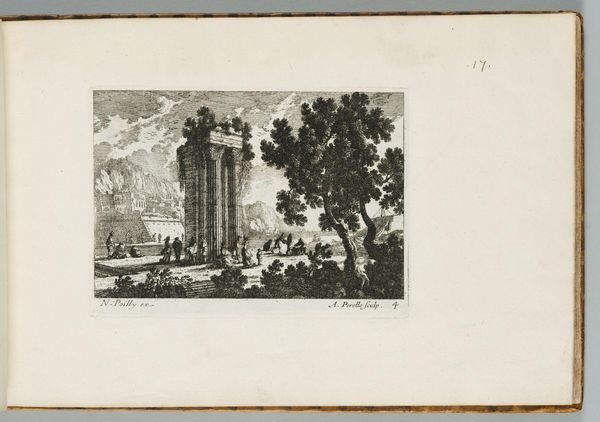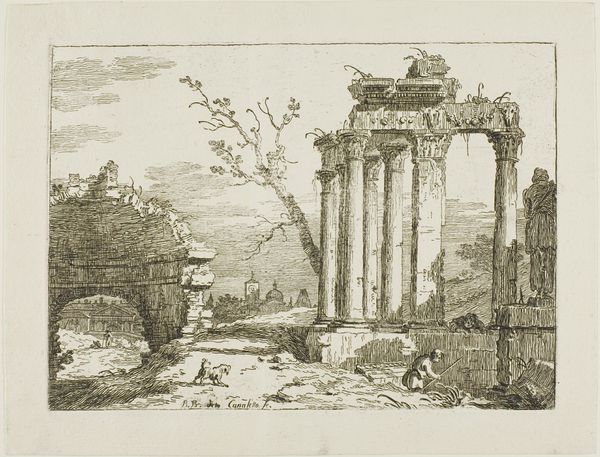
print, etching, engraving, architecture
#
neoclacissism
#
ink paper printed
#
parchment
# print
#
etching
#
old engraving style
#
landscape
#
cityscape
#
italian-renaissance
#
engraving
#
architecture
Dimensions: height 214 mm, width 327 mm
Copyright: Rijks Museum: Open Domain
Curator: Immediately, I am struck by the palpable sense of melancholy conveyed by this etching. The crumbling edifice set against a seemingly serene landscape feels pregnant with historical significance. Editor: That's a fascinating read, it does speak to a lost golden age, doesn't it? This print by Giuseppe Vasi, created sometime between 1720 and 1782, presents the Temple of Vesta at Tivoli. Vasi’s architectural prints played a key role in disseminating images of Roman antiquity, shaping perceptions of its grandeur, both then and now. Curator: Yes, absolutely. The contrast is powerful, actually. We have this vision of classical perfection embodied by the temple’s architecture, rendered here in this state of disrepair, forcing a confrontation with themes of decay and temporality. The very choice of print as a medium further speaks to issues of reproduction and accessibility to cultural knowledge in the 18th century. Editor: Precisely. Printmaking enabled a broader audience to engage with these architectural marvels. Consider the political implications: Vasi's work encouraged an ideal of civic virtue drawn from Roman history that directly related to the 18th-century aspirations of European aristocracy and nation-states, which adds a layer to our modern consumption of historical imagery. Curator: And if we interrogate the positioning of the human figures within the landscape – they seem almost dwarfed, marginalized by the imposing ruin, echoing that loss of status within an idealized era. Are they observers, witnesses to decline, or simply placeholders establishing scale? This relationship of bodies to context interests me most. Editor: I see your point; perhaps the figures provide a comforting touch, reassuring viewers in the face of entropy, implying the capacity to admire beauty even in ruins, and they also demonstrate how space can still exist. This piece isn't just documentation; it engages a sophisticated visual rhetoric. Curator: Indeed, and in revisiting it, my appreciation grows for the layers of historical commentary and visual rhetoric that Vasi so expertly wove into this landscape. Thank you. Editor: It's been insightful examining the work through both our lenses. Thank you.
Comments
No comments
Be the first to comment and join the conversation on the ultimate creative platform.

